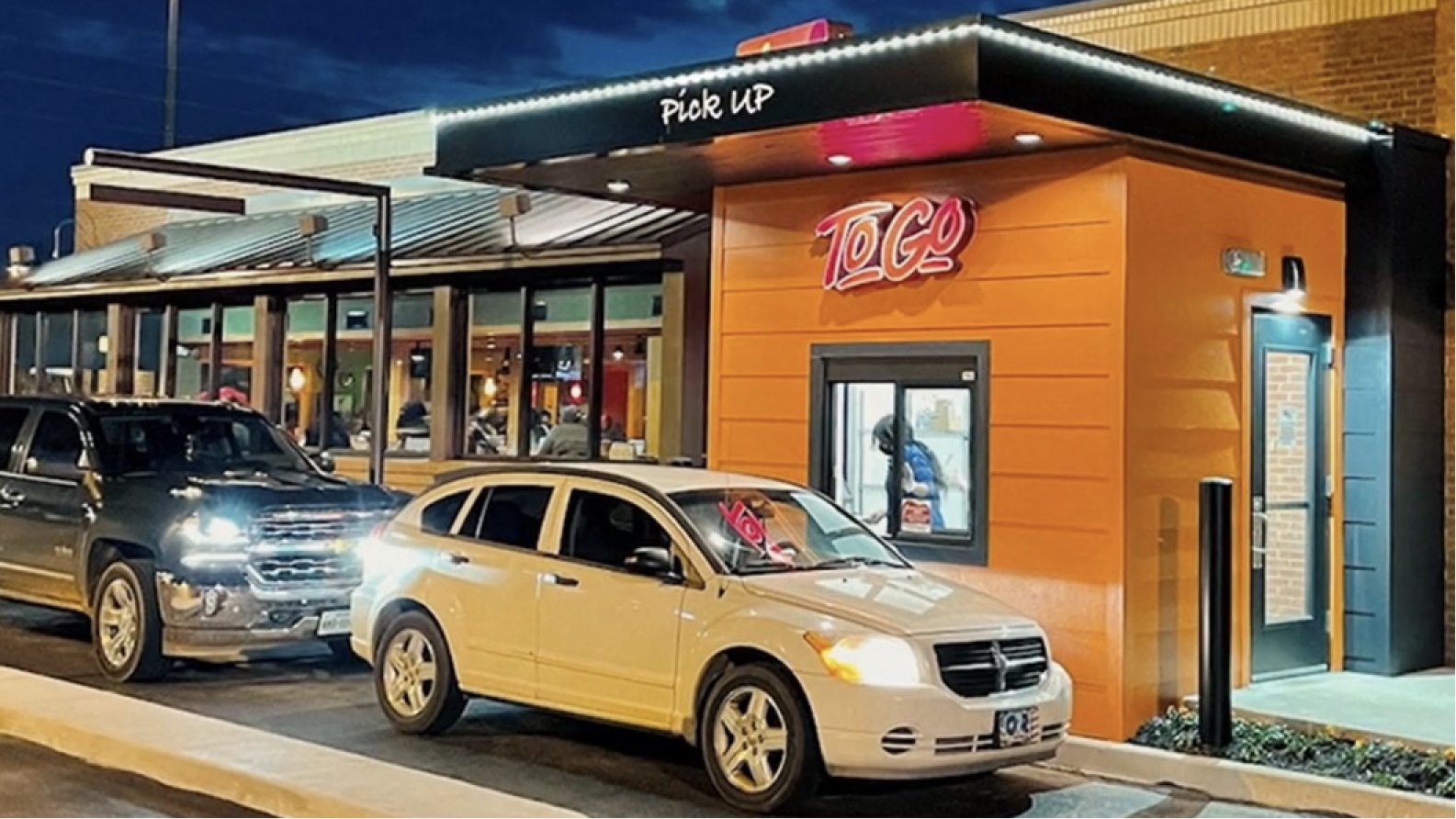5 Technology Solutions For Essential Business Services

Director Product Management
5 Technology Solutions For Essential Business Services
Introduction
What are Essential Business Services?
Why Essential Businesses Should Work with Managed Service Providers
As essential services businesses continue to operate throughout the global health crisis, they are bracing for an expected spike in IT and physical security challenges.
Operations, IT and asset protection professionals are being asked to identify and evaluate the key technologies that will help them stay connected and protected and that make the most sense to integrate into their operations. Already stretched, as they deal with smaller teams and tighter budgets, it’s hard for these industry professionals to stay on top of all the latest advancements.
Here is how having a managed service provider can help essential businesses cope with these challenges.
- A managed service provider can act as an extension of the in-house team to help assess needs and evaluate new technologies to see if they would be the right fit.
- Managed service providers with a strong OEM relationship base or technology partner network can act as a bridge between customer requirements and new technologies or toolsets developed by vendors.
- The experience gained by working with multiple customers in an industry segment allows managed service providers to cross-pollinate ideas and best practices across projects to deliver ROI faster.
5 Technologies Essential Businesses Should Adopt Now
Here’s a look at 5 standout technologies essential businesses should consider to safeguard their people, customers and assets, transform network connectivity and drive operational efficiencies.

1. Interactive Monitoring Systems for Pervasive Security
Move over, passive camera feeds. Interactive video systems directly address safety and security concerns for employees and customers.
These systems, which offer live video and two-way audio, have been critical for many businesses and are gaining considerable momentum. For businesses that are either lightly staffed or have no security guard, a virtual guard solution that includes an interactive monitoring system with remote monitoring by security professionals, offers safety at a fraction of the cost of a live, on-premises security staff.
For many essential businesses that are still open and operating throughout the pandemic, this solution provides a security team that can see, hear and communicate with employees in a store, restaurant or other business.
In some of the newer applications, the voice down feature provides the ability to not only make public announcements during store openings, closings or cash drops but can also address social distancing, food safety compliance issues.
Throughout the day, remote intervention specialists can conduct virtual guard tours by tapping into live audio and video feeds to check the premises, similar to what an on-premises security guard would do. Once complete, the specialist might then ask the location if all is well and seek an affirmative response from the employees. The purpose of this is three-fold.
- It lets customers know there’s a security presence watching over the location and provides them with peace of mind.
- It also alerts potential shoplifters and other threat actors that they are being watched.
- Finally, it provides the employees of the store with a sense of security knowing that they are not alone.
Many businesses that are still operating are also offering new and/or alternative services such as curbside pickup. They are looking to expand their current security solutions to go beyond what’s inside their location to also cover areas just outside their doors. The interactive video monitoring solution might be the best bet to tackle these emerging needs.

2. Artificial Intelligence to Unearth Operational Insights
Something we’re often asked about is how artificial intelligence applications can be leveraged to make business processes more effective.
We have been testing out some really great facial recognition technology that has the potential to be a game changer. Businesses can marry facial recognition technology with video monitoring to enable new applications such as people counting at stores.
While stores are under mandatory capacity constraints, this could be used to create alerts around exceeding capacity without manually counting people with a clicker at the door. With a camera pointing out and another pointing in, we can subtract those leaving from those entering to get a net number of people in the store.
The same technology can be used to thwart shoplifters by creating alerts that are tied to specific suspect faces based on previous issues. If a person with a tagged face is identified as they enter a store, an immediate alert can be provided to a monitoring center for quick intervention.
As described earlier, making an announcement when that suspected shoplifter enters is a great way to let that person know they are being watched and that will likely change their behavior. While this technology has the potential to really enhance the security space, it also triggers significant questions over privacy concerns and requires restrictions on storing and handling a facial image, so caution is also urged.

3. 4G/5G/Wireless WAN to Gain Operational Flexibility
Operations and IT professionals are trying to help their businesses get enough bandwidth to run more applications over their network and enable seamless performance.
Terrestrial broadband connections are often expensive or not available. 4G LTE is a ‘right here, right now’ technology that works very well as a fixed location broadband service.
While 5G is being deployed by the big three carriers, they are initially focused on dense cities and mobile customers, and not yet on fixed location broadband solutions. 5G has some technological challenges with signal reception inside buildings that are still being resolved. With that said, 5G isn’t quite ready yet, but we’re keeping our eyes on it because of its great potential.
Meanwhile, we provide thousands of locations with dual 4G LTE connections where all store applications rely on that connection—even VoIP— and performance and reliability have been excellent.
One caution with wireless is that the wireless carriers offer the service as a metered plan or with caveats on their “unlimited” plans. For now, the key is to be smart with what’s being deployed, and which applications are appropriate.
For example, a business offering guest Wi-Fi might want to avoid a metered use 4G/5G connection which can get very expensive very quickly.
One strategy we recommend that solves the bandwidth challenge is to combine 4G with cable or high-speed DSL, using 4G as a backup or for business-critical applications, and running the bandwidth intensive applications on the terrestrial circuit with some intelligent routing.
Something else on our radar that’s becoming increasingly important across a variety of businesses, are pop-up networks. They’re innovative new ways of doing business for workforces in the field or temporary locations and are pushing for secure and easy to deploy connectivity that can be remotely monitored and managed.
On a side note, Interface has strategic partnerships with both Cradlepoint and Fortinet, as well as various wireless carriers, to deliver a fully managed wireless service to businesses.
Look out for more exciting announcements and promotions in the upcoming months!

4. SD-WAN to Leapfrog Limitations of a Traditional WAN
Another technology that is gaining a lot of attention is SD-WAN.
Many IT leaders have either already adopted it or are in the process of evaluating the various offerings. Since many of the SD-WAN solutions can be rather pricey, it’s smart to understand what does SD-WAN mean for a typical business that is on a tight budget?
As essential businesses look to embrace new ways of serving customers, the dependence on traditional WAN severely limits the options available to extend the network where it is needed.
According to Gartner, SD-WAN solutions provide a replacement for traditional WAN routers and are agnostic to WAN transport technologies. SD-WAN provides dynamic, policy-based, application path selection across multiple WAN connections and supports service chaining for additional services such as WAN optimization and firewalls.
The promise of SD-WAN is to enhance WAN performance and simplify WAN administration through software and automation. SD-WAN is an evolution of technologies that pre-existed the term “SD-WAN” but work extremely well as a unified architecture.
Realizing the promised transformational benefits of SD-WAN is not a walk in the park. There are three fundamental challenges that IT leaders need to watch for before embracing an SD-WAN solution:
- Implementation can be complex
- Realizing cost savings with a SD-WAN is not that easy
- Interoperability with your existing network infrastructure can be challenging
We certainly recommend reading our in-depth guide on how to go about implementing an SD-WAN solution to transform your WAN.
Click here to read our SD-WAN guide.

5. Business Voice Over IP for Better Collaboration and WFH
If an enterprise has not yet converted to Voice over IP, it should certainly look into doing so. VoIP solutions deliver simple, powerful and cost-effective calling services for distributed enterprises.
Most of the business VoIP solutions include features such as unlimited local calling, free long distance on network, four-digit enterprise-wide dialing and voicemail and ‘find-me-follow-me’ to make it easy to be contacted no matter where you are physically.
For essential businesses, having a cloud cloud-based auto attendant that comes with VoIP solutions can be game-changing. The value here is that when someone calls a store or business, the phone is not actually ringing at the location. It’s ringing a cloud-based auto attendant which presents the caller with clear options from there.
For instance, if the caller is looking for directions or for business hours, there’s no need for the call to be transferred to the store or business location. Those kinds of questions can be answered with a recording. If the customer really wants to speak directly with someone at the location, there’s an option for them to transfer.
With this solution , businesses can reduce between 50 to 60 percent of the call volume for employees and free their time to be used for other important tasks.. And while there is some management involved, such as updating information like store or business hours, the customers that we’ve deployed it for absolutely love it, especially when they’ve asked us to manage and maintain the information as it changes throughout the year.
Customers also appreciate the ability to define ring groups and call flows that can be used to dial specific phones in a specific order or in response to different conditions. If no one is available to take the call in a store, for example, after a certain number of rings, the call can automatically be routed to a call center to be handled by the next available agent. Or it could be routed to a cell phone. Or to another store.
There are many possibilities.
Additionally, there are business continuity/disaster recovery options for VoIP that, in the event of a disaster, can reroute calls from one location to another all from a cloud-based console.
What’s Ahead for Essential Businesses
There are many other interesting emerging technologies on the horizon. Some we haven’t covered yet but look forward to announcing soon such as cameras that can detect people with fevers and cloud-based mobile text messaging for handling customer support at scale. We already have some of these in our labs being studied, tested and assessed.
In this blog post, we’ve looked at a number of technologies that have been making serious inroads in various businesses and are currently being deployed. Many are directly making a difference in our current climate.
A managed service provider such as Interface, with years of deep networking and security expertise, can help business, IT and security professionals make the right choices when deciding which technologies are ripe for deployment. We then work closely with them to design, integrate and support custom solutions to meet their unique challenges.
Share this article
About the Author

Tom Hesterman
Senior Vice President of Products and Solution Engineering
Tom Hesterman is Senior Vice President of Products and Solution Engineering at Interface Security Systems and oversees the departments focused on evaluating new technologies, designing customized solutions for customers, developing products for installation at scale and working with customers to leverage the variety of managed services provided by Interface. Tom has 25 years of expertise in secure networking, telecom, wireless architectures, intrusion alarms and business intelligence systems along with 11 years as an aerospace engineer. He has enabled large enterprises in transforming their IT and asset protection system infrastructures. Prior to joining Interface, Tom held various executive roles including VP of Service Delivery for MegaPath, VP of Customer Operations at Telepacific Communications and President of Primary Network. Tom holds a BS in Aeronautical Engineering and MS in Engineering Mechanics.
Explore more blog articles

Business Video Surveillance Insights for Loss Prevention Teams

7 Groundbreaking Drive-Thru Concepts and Trends for QSRs in 2024

Retail Network Transformational Insights
Connect with Our Experts
Interface solution experts are ready to help you solve challenges. Set up a no-obligation, exploratory call now.